Annelids
Annelids are segmented worms. They have neither arms, nor legs, nor an exoskeleton. You are likely familiar with at least one species of annelid; the earthworm.
The Annelida phylum is one of the oldest phyla of animals. Dating back over half a billion years, these industrious segmented worms have changed the planet in numerous ways. Today, there are over 9,000 species of annelids across the entire planet. They live on all seven continents, on land, in tidal mudflats, and at the bottom of the ocean. Earthworms, leeches, tubeworms, and bait worms are all different types of annelids.
To learn more about these seemingly simple creatures, we will first explore their distinguishing features and body plan. Then, we will investigate their taxonomy. Once we learn these basics of annelids, we will see how they impact our planet and humankind. Finally, we will travel the world to learn about a few extreme species of segmented worms.
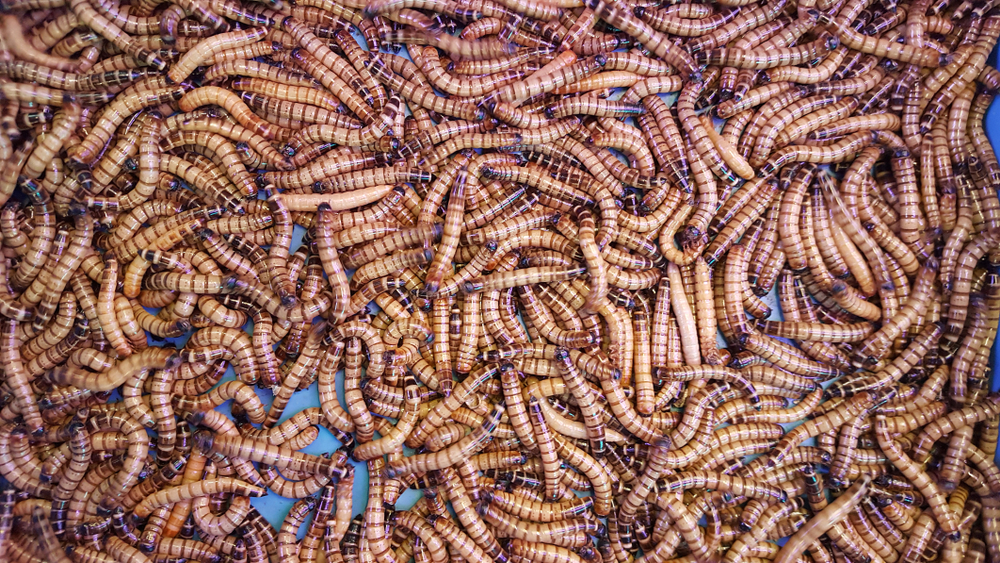
Distinguishing Features of Annelids
The taxonomy of the phylum Annelida is currently a little squishy. Scientists who study this taxon frequently disagree on how to classify the creatures. However, two features set annelids apart from the rest of their invertebrate brethren. These are the repeating segments within annelid bodies and the multi-purpose, hair-like chaetae that protrude from each segment.
In addition to these two unique features, annelids share some important structures that determine how they live their lives and interact with the world.
Unique Annelida Features
Apomorphy is the term for traits that are unique to a certain group of organisms. While species never fit perfectly into the taxonomic boxes we make for them, these apomorphic traits are usually the best way to put an organism into a kingdom, class, phylum, and so on.
An example of apomorphy for flowering plants would be flowers. Therefore, all plants with true flowers fall into the angiosperm category. Similarly, needle-bearing trees all share the trait of needles. The two apomorphic traits for annelids are the presence of repeating body segments and chaetae.

Repeating Segments
In their most basic form, annelid worm bodies are comprised of a head, followed by several to hundreds of repeating body segments, ending in an anus. The repeating body segments are typically separated by septa. These septa act as walls between the segments, which prevent fluids from moving between segments.
Each segmented body compartment usually has a space between the gut, which runs the entire length of the worm, and the skin of the animal. This body cavity is called the coelom. The coelom is usually filled with some sort of fluid. Segmented worms can use the coelom to contract and expand each segment in different ways. This expansion and contraction results in peristaltic locomotion. This is just a fancy way of saying this segmentation allows the worm to move by wiggling, very much like this cool robot.
Each repeating segment also contains organs called nephridia. These are tube-like organs that excrete waste products from the coelom through the body wall and into the outside world.
Chaetae: The Multi-Purpose Appendages
The word chaeta, or setae, comes from Greek, where it means 'flowing hair' or 'mane'. The chaetae on segmented worms are appendages that extend from each side of the worms. Each segment usually has a pair or multiple pairs of chaetae.
The chaetae of segmented worms offer incredible diversity in form and function. Besides the mouth, the chaetae are the only major structures that allow different species of segmented worms to perform different tasks. Chaetae can be shaped like legs (called parapodia), hooks, combs, fans, and spines. A single annelid worm can have many different shaped types of chaetae, each able to perform separate tasks. Think of these different chaetae shapes as different utensils in your kitchen. Each is useful for its own purpose.

Other Important Annelid Body Structures
While the chaetae and repeating body segments make annelids unique among invertebrates, these segmented worms have other important features of their body plan that help them thrive in environments all over the world.
Digestive System
The digestive system of annelids, like most animals, begins with the mouth. There is a great diversity of mouth structures between different species of annelids. Some species of annelids are stationary. These annelids anchor themselves into the ocean floor using their chaetae to grip onto rocks or substrate. The mouths of these annelids feed from a fixed location (more on the incredible, stationary feeding spaghetti worm below). Other annelids, such as leeches, move around to find their food. Leeches have mouths that slice through flesh and are able to suck blood. Yikes!
After the mouth, food moves through the digestive tract. The digestive tract extracts nutrients from the food. This tract is one long tube that extends between all the repeating segments of the annelid body. At the rear end of the worm, spent food is expelled through the anus.
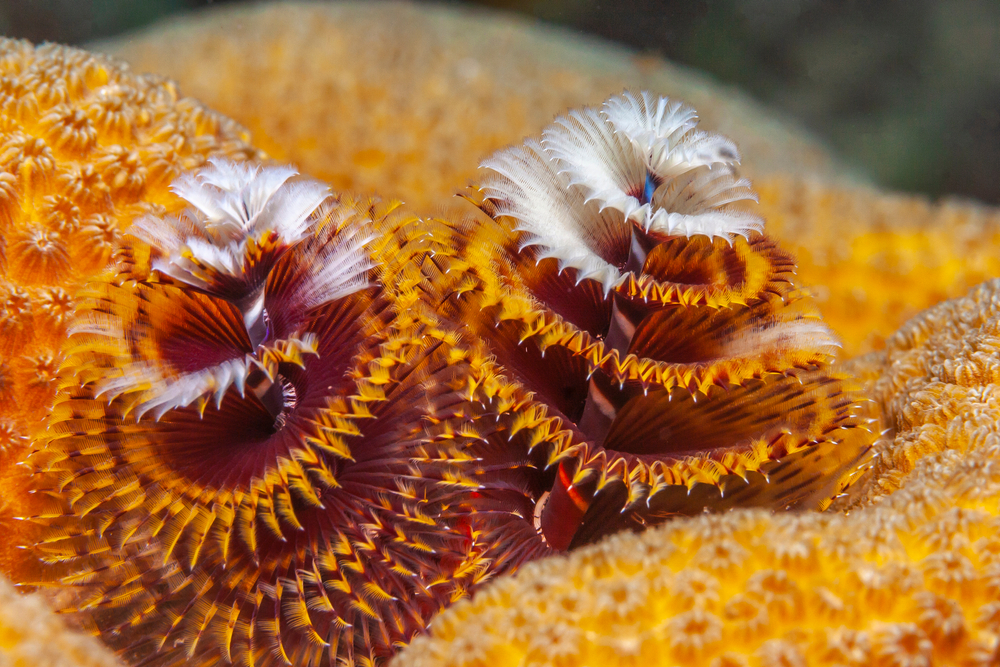
Closed Circulatory System
Annelids have a closed circulatory system. This means that their blood is contained within blood vessels. Segmented worms have two main blood vessels, one that runs from the head to the rear on the bottom side, or ventral side, of the worm. The other vessel runs from the anterior to the head on the top side, or dorsal side, of the worm. As with the digestive system, these vessels run through each segment. Some annelids have muscular structures in their blood vessels that function as hearts. Others rely on body movement to circulate the blood.
When someone says that earthworms have five hearts, they are mostly correct. Earthworms have five muscular structures that push blood around, but they are a bit too primitive to be considered a true heart.
Nervous System
Worms have brains! Isn't that kind of surprising? One nerve cord runs along the ventral side of the body. This nerve cord carries all the directions from the brian to each of the different segments. Predator annelids have larger brains than stationary annelids. It takes more smarts to hunt than to filter feed!
Annelid Taxonomy
When learning about a class, order, or phylum of life, it's always helpful to learn about their closest relatives. The annelids are a phylum of animals. Just above the annelid phylum is the lophotrochozoa superphylum. While a superphylum isn't an official designation in taxonomy, it is useful for understanding relationships between animals.
Higher-Order Relatives
The lophotrochozoa superphylum has two main groups of animals; the lophophorata and the trochozoa. All animals within this superphylum develop their mouth before their anus in the embryo.

Trochozoa
The bulk of species within the trochozoa clade are either annelids or mollusks. Mollusks you have probably heard of include snails, octopus, cuttlefish, clams, and even the giant squid! Mollusks are one of the most diverse orders of animals in the entire animal kingdom. There are between 50,000 and 200,000 species of mollusks on planet Earth. However, both mollusks and worms pale in diversity to the all-mighty arthropod phylum, which boasts up to 10 million species.
You might be wondering how a giant squid is closely related to an earthworm. Well, you're not alone. While an adult giant squid and an adult earthworm are indeed very different, they begin life looking rather similar. All animals in the trochozoa clade have similar larval forms. These larvae have a mouth, a gut, an anus, a tiny brain, and two layers of hair-like structures that they can swim with. As these animals develop from their larval stages, their differences become bigger than their similarities.
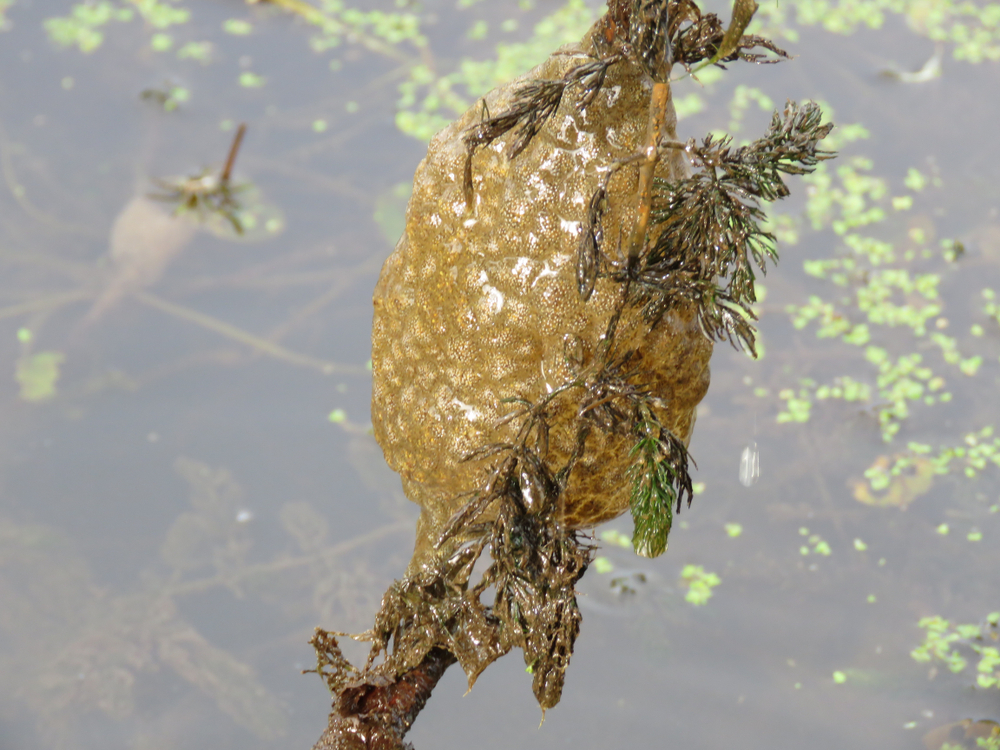
Lophophorata
Animals within the lophophorata group tend to be stationary. They either borrow into the sand or substrate and filter feed or attach themselves to rocks or larger animals. Most people would confuse animals within the lophophorata for classic bivalves, such as barnacles and clams. Bivalves are types of mollusks, and therefore in the trochozoa group. Animals in the lophophorata are different from bivalves because they have lophophores. A lophophore is a ring of hollow tentacle-like structures that surround a mouth. The three main phyla with lophophores are brachiopoda, bryozoa, and phoronida. People rarely encounter these animals because they live in colder waters and are fairly discreet.
Different Classes of Annelids
Now that we've explored the taxonomical relationships higher up the tree of life from annelida, we will dive into the differences between classes of annelids. Class is the next official grouping below a phylum in taxonomy. The annelids have previously been separated into three main classes. However, modern taxonomy sees these distinctions a bit differently. We'll explore both. Keep in mind that no rules in taxonomy are perfect. For example, the echiura subclass of annelids worms doesn't have segments! Taxonomy can be frustrating!

Polychaeta (Ocean Worms)
What distinguishes the polychaetes from other annelid classes is apparent in their name. 'Poly' means many and 'chaeta' are the diverse structures that protrude from the skin that we explored earlier. All worms in the class polychaeta have more than one chaeta for each side of each repeating body segment. The polychaetes have the most interesting chaeta adaptations within the annelids.
This class, unlike other classes of annelids, does not have permanent sex organs. They temporarily make these organs during breeding season.
Almost all species of polychaetes live in the ocean. Scientists have discovered over 10,000 species of polychaeta, making them one of the most diverse classes of animals.

Hirudinea (Leeches)
Eek! Few people enjoy thinking about leeches. Blood-sucking worms! Ain't much scarier than that on this fine Earth. The leeches make up their own class within the annelids.
The most emblematic feature of leeches is their sucking and slicing mouths. They have one suction-cup-like mouth in the front of their bodies and one similar, suction-cup-shaped adaptation near their anus. Using these two suction cups, they are able to move along like inchworms.
Leeches always have either 33 or 34 repeating segments. Unlike the Oligochaeta (below), these animals aren't scavengers or decomposers. They are parasites and predators!
Scientists have described almost 700 species of leeches. Unlike saltwater-loving polychaetes, most leeches live in freshwater. About 15% of these leech species live in the oceans and land. The rest live in freshwater. The Hirudinea are a relatively small class of animals.

Oligochaeta (Land Worms)
The Oligochaeta are likely the class of annelids you have spent the most time with. Earthworms and most segmented land worms fall into this class. 'Oligo' means few or scanty. Unlike the Polychaeta, the Oligochaeta have few, reduced, or no chaeta on their bodies.
Earthworms are a great example. While they don't have obvious chaeta that look like legs, they do have reduced chaeta that can be seen with a microscope. These nearly invisible chaeta help earthworms grip surfaces and substrates as they move from place to place.
Modern Taxonomy of Segmented Worms
Taxonomy is never simple, right? While traditional taxonomists keep annelids in the three classes explained above, modern taxonomists group the oligochaeta and hirudinea into one class, called the clitellata. All the animals in the clitellata class have a clitellum. 'Clitellum' means little ring in Latin and is the fat band near the head of an earthworm. This fat band is the reproductive area of the animal. Clitellates (the name for worms with a clitellata) nurse their eggs in the clitellum before excreting them into the environment. They secrete these eggs as cocoons.

Fossil Evidence of Annelids
The fossil evidence of annelids isn't as compelling as that of dinosaurs and mammals. Since annelids have no body skeleton, few parts of their bodies can be fossilized. Neither the oligochaeta nor leeches have any hard body parts, meaning we have next to no fossil records of these animals. Polychaeta, on the other hand, sometimes have hard jaws and some species create mineralized tubes. Both these structures can be fossilized. The earliest fossil records we have of annelids are from 520 million years ago.
Half a billion years ago, life underwent the Cambrian Explosion. Life rapidly diversified during this era. Animals were just beginning to emerge from the ocean onto land. The fossil record seems to suggest that annelids benefitted from the Cambrian Explosion like many other phyla.
Global Importance of Segmented Worms
While we often think of large vertebrates and trees when we think of ecosystems, the small animals beneath our feet can be just as important. Annelids, whether they are forest floor decomposers or ocean predators, are an integral part of the web of life. Annelid worms have many other significant impacts on our planet than are covered here. The following are just a few examples of how these worms impact our planet.
Agriculture and Soil Health
Earthworms (oligochaetes) are vital parts of most soil systems. These worms eat decaying organic matter and decompose it in their gut. Their excrement is nutritious for both plant and soil microbe communities. These plant and microbe communities can more easily use the nutrients in the worm feces than in an entire leaf. Worms speed up the process of decomposition.
In addition to speeding up decomposition, earthworms increase the ability of soil to catch and retain water. As they move through the topsoil, worms leave small tunnels of air behind them. These tunnels act as pipes into the soil for water to drain into. Moreover, the decomposed worm feces is much better at retaining moisture than undecomposed organic matter. Therefore, earthworms invite more water into the soil and help that water stay there longer.
The process of earthworms making these porous soil tunnels has another beneficial impact on the soil. As they wriggle up and down, earthworms slowly till the soil. The physical act of moving the soil is one way they till the soil. They also eat matter on the surface and excrete it well below the surface and vice-versa. All this movement means that earthworms can effectively till the top six inches of soil in as little as ten years!
Based on biomass, worms are the most abundant invertebrates in the soil! We should all thank earthworms for the invaluable services they provide our food and ecosystems.

Vermiculture
Some people have harnessed the decomposing power of earthworms to make ultra-fertile compost. Vermiculture is the use of worms to break down food waste into usable compost for plants. People cultivate certain species of worms for the purpose of vermiculture. The most commonly used species is Eisenia fetida, or the red wriggler. The African and European nightcrawlers (E. euginae and E. hortensis) are other common vermiculture worms.
These worms can break down all sorts of tough food, such as egg shells and bones. Vermicomposting, when done properly, turns 95% or more of food waste into usable compost in 5-6 weeks. Many sustainability-focused home gardeners practice vermiculture because the worms cut down on food waste and create compost with comparable or better quality than that of store-bought compost. If you are interested in vermiculture, all you need is a pound of red wrigglers, a dark container, some saw dust, and some food waste. It really is as simple as that!
Vermicomposting Toilets
People also practice vermiculture for composting toilets. These worms will eat human poop and decompose it from hazardous biowaste into nutrients available for plants. This process is largely fragrance-free because earthworms secrete anti-bacterial chemicals from their coelom when they poop. These anti-bacterial chemicals prevent the smelly odors that bacteria emit from plaguing the composting toilet.
Annelids Can Change the Earth's Climate
Along with beavers, elephants, corals, and other important species, earthworms are ecosystem engineers. This means that they have an outsized impact on their ecosystems, often by modifying the ecosystem extensively. In fact, annelid worms are such engineers that they have a significant impact on our planet's climate.
Prehistoric Climate Change
The course of evolution of life on Earth can be attributed, in some part, to annelids. Before the Cambrian Explosion, organisms were mostly simple and lived in the oceans. A major turning point in global evolution was the increase of carbon dioxide in the atmosphere, which led to global heating in the Cambrian era. New research suggests that the evolution of animals that burrow on the ocean floor caused this global heating. Many of these burrowing animals were likely prehistoric annelids. Before this burrowing, the ocean floor was a solid algal mat where little biogeochemical cycling occurred. Burrowers poked innumerous holes in this algal mat, introducing oxygenated ocean water to previously anaerobic substrate. This gas exchange and stirring up of material led to bacterial consumption of millennia's worth of organic matter. As this matter decomposed, it released vast amounts of carbon into the atmosphere while consuming oxygen in the ocean. Over time, this bacteria used up enough of the oxygen in the ocean to cause an extinction event. Those worms might look small, but their collective impact is profound.
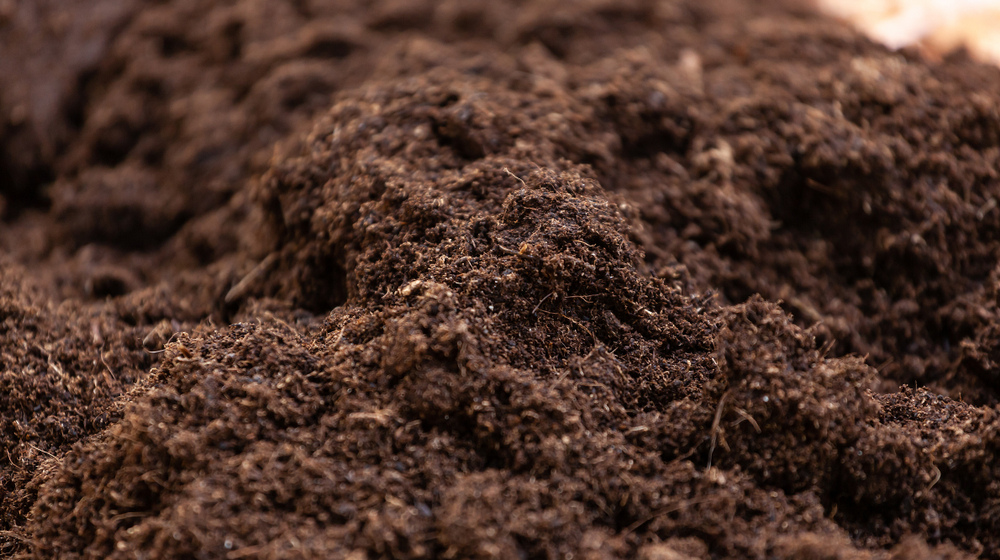
Earthworm Invasions and Modern Climate Change
While earthworms increase the fertility and agricultural productivity of the farmed soil, their presence isn't so great in all soils. Surprisingly, earthworms disappeared altogether in much of North America during the previous Ice Age, beginning about 12,000 years ago. As glacial ice sheets moved south through the continent, no space was left for earthworms. As a result, the modern forests of the northern U.S. and Canada evolved without earthworms. Instead of worm decomposers, fungus and other soil invertebrates broke down the organic matter in northern North American forests. The introduction of these earthworms has significantly changed the ecology of these forests.
These non-native earthworms can significantly increase the greenhouse gas emissions from forest soils. Soil accounts for about 20 percent of global greenhouse gas emissions. Earthworms are expected to rapidly increase their range throughout Canada in the coming decades. This increased decomposition could have a significant impact on climate change.
Fishing
Annelids are one of the favorite baits used by fisherpeople around the world. The same species used for vermicomposting, the red wrigglers, are coveted for fishing bait because their wriggling behavior attracts fish. Interestingly, bait worms are many times more expensive, per pound, than lobster! Each year, humans use over 120,000 tonnes of bait worms for fishing. A 2016 study revealed that the bait worm industry is worth over six billion dollars. These worms are usually collected by hand, with people gathering worms in mud flats during low tide.
Wild and Extreme Annelids
There are plenty of options of extreme annelids to choose from, but I've only focused on three species here. These species aren't the most globally important species of segmented worms, but they are very interesting, nonetheless!
A close-up of a colony of giant tubeworms. Photo by National Oceanic and Atmospheric Administration

Giant Tubeworms (Riftia pachyptila)
These bizarre creatures are certainly one of the most extreme annelids. They are marine worms that live exclusively on hot hydrothermal vents on the ocean floor of the eastern Pacific. They can be found at a depth of 2 miles below the ocean surface! The giant tubeworms take the cake for the heaviest annelids and can grow over six feet tall.
The anatomy of giant tubeworms is different from most annelids. Instead of digesting food with a gut like normal worms, these unusual beings use bacteria to digest sulfur. Sulfur naturally flows out of the hydrothermal vents on the ocean floor. Since they are stationary, giant tubeworms build hard tubes around their soft bodies to protect them from predators. They can retract their feathery plume when prospective predators get too close. The feathery plume is the organ that exchanges gasses between the worm and the ocean environment.
Scientists discovered these worms in 1977, at the beginning of modern deepsea exploration. The 'reefs' that giant tubeworms create make homes for over 60 other species of animals.
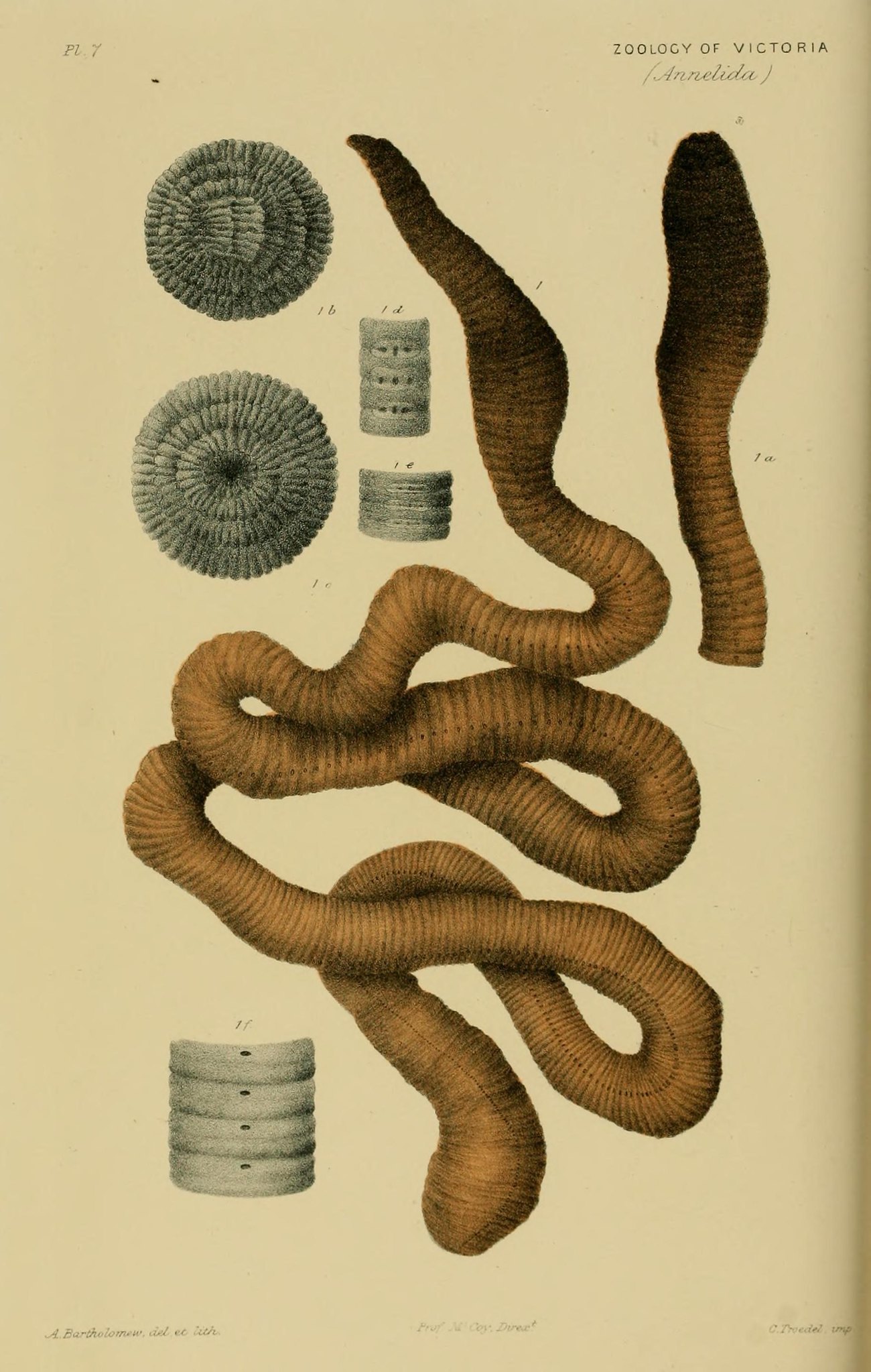
Australian Giant Gippsland Earthworm (Megascolides australis)
The Australian Giant Gippsland earthworm is almost as long as its name. At nearly five feet long, this is among the longest known earthworm on our planet. Legend has it that, historically, they reached nearly 10 feet in length. A single worm can weigh nearly a pound.
The Australian government lists this giant as 'vulnerable' due to various factors. First, it only lives in a small area of southwestern Victoria. These worms live exclusively near wet areas with deep clay soils. These habitats are few and far between, so populations of the giant earthworms are isolated from one another.
Most of the suitable habitat for the giant earthworms is private land, which further complicates their conservation. Some landowners may be interested in conserving habitat for the earthworms, but others may not. Currently, these giants live mainly in dairy pastures.
These strange creatures are difficult to study, so scientists have limited data about these worms. As a result, we don't know that much about their population, habitat preferences, and life history. What we do know is that these giant worms are surreal and can turn over some serious amounts of soil!
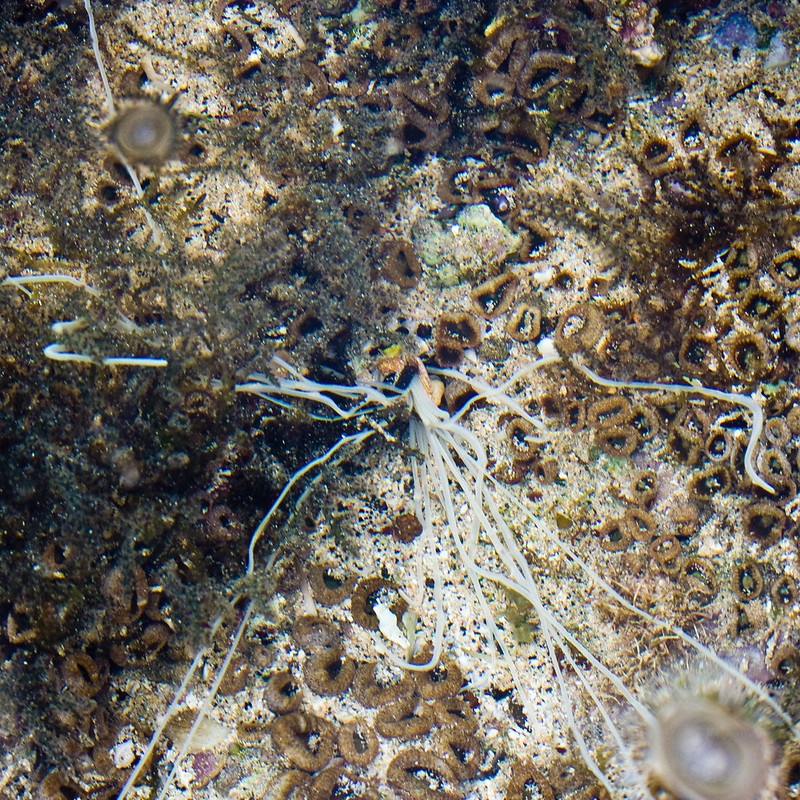
Spaghetti Worms (Terrebellid spp.)
Spaghetti worms create tubes and are stationary, like giant tubeworms. Almost like a spider, these worms lay out dozens of tentacles that can extend up to three feet from the worm's mouth. These tentacles scavenge food within the radius that they can reach. Once a tentacle finds some sort of organic matter, it will grab it and shuttle it back to the spaghetti worm's mouth. They also use their tentacles to ferry tube-building materials from their environment, such as sand and broken shells. These polychaete worms use their chaeta to anchor themselves into place and to hold onto the tube protective tube they construct.
These worms live in the Indo-Pacific region, including Hawaii.
Final Thoughts on the Phylum Annelida
Annelids may be small, but their cumulative impact on our planet is grand. These wriggling creatures change our forests, oceans, croplands, and even some people's toilets. While many people have adverse reactions to these worms, it is likely that some solutions to our 21st-century problems of climate change, waste disposal, and cropland fertility will involve annelids to some degree.
families in annelida
Jump to families starting with:
News coming your way


























